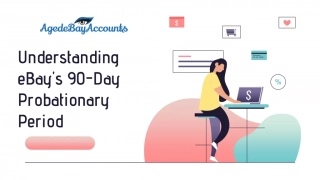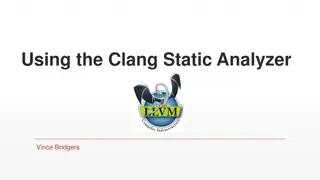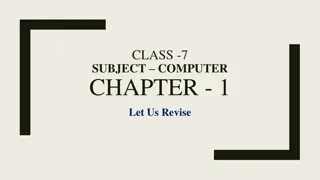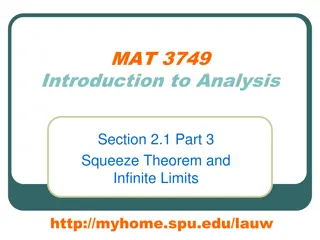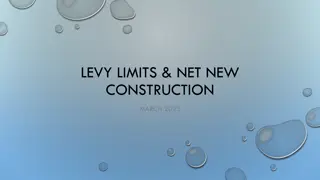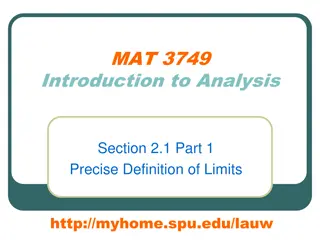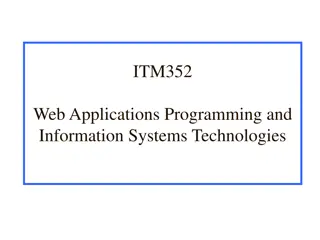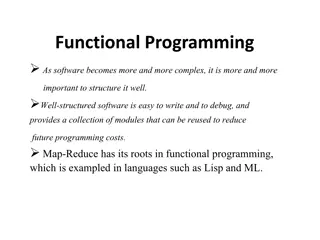Understanding Limits of Linting in C Programming
Exploring the constraints of linting tools in C programming, particularly focusing on scenarios where a linter might flag legitimate code due to inherent limitations in static analysis. The discussion delves into common anti-patterns, security considerations, and the challenges of sound bug detection and program verification. Additionally, it touches on the shift towards dynamic analysis and the necessity of balancing guarantees with practicality in software security evaluation.
Download Presentation

Please find below an Image/Link to download the presentation.
The content on the website is provided AS IS for your information and personal use only. It may not be sold, licensed, or shared on other websites without obtaining consent from the author. Download presentation by click this link. If you encounter any issues during the download, it is possible that the publisher has removed the file from their server.
E N D
Presentation Transcript
EXERCISE #25 LINTING REVIEW Write your name and answer the following on a piece of paper Give an example of a legal program in C that a linter would nevertheless flag 1
ADMINISTRIVIA AND ANNOUNCEMENTS
PROGRAM INSTRUMENTATION EECS 677: Software Security Evaluation Drew Davidson
4 LAST TIME: LINTING REVIEW: LAST LECTURE REMOVINGTHE STRAY FIBERS OFA PROGRAM Analyze common anti-patterns that are likely to cause issues (security and otherwise) NOTABLEANALYSISTOOLS Lint The original analysis tool Splint Security analysis tool
5 CLASS PROGRESS MOVING ON TO DYNAMIC ANALYSIS More heuristic by nature
6 LIMITS OF STATIC ANALYSIS PROGRAM INSTRUMENTATION: BASIC IDEA PRACTICAL ISSUES - Unsoundness of bug finding / incompleteness of program verification - Scalability - Significant engineering effort
7 REVISING DYNAMIC ANALYSIS PROGRAM INSTRUMENTATION: BASIC IDEA GIVINGUPON GUARANTEES - Finding bugs (even low-hanging fruit ) is useful! ADVANTAGES - Simplest form: testing
8 BEYOND TESTING PROGRAM INSTRUMENTATION: BASIC IDEA LIMITATIONSOF PLAIN TESTING - Property may not be immediately observable from output alone - The circumstances under which the issue occurs may not be obvious
9 INSERTING PROGRAM PROBES PROGRAM INSTRUMENTATION: BASIC IDEA INSERTCHECKS / REPORTSINTOTHE ANALYSISTARGET Addresses both of the previous issues can report upon program state and even program path MANY PROGRAMMINGLANGUAGESHAVE EXPLOITABLECONSTRUCTS Programming constructs that do not operate as intended under unforeseen circumstances A NEWCONCERN THEEFFICIENCY OFTHE (INSTRUMENTED) PROGRAM Potential slowdown on each program path LACKOF HOLISTIC INFORMATION Somewhat limited by the information the probes can report
10 EXAMPLE: CONTROL PROFILING PROGRAM INSTRUMENTATION: BASIC IDEA COUNTING HOWMANYTIMESCERTAIN BEHAVIORSOFTHEPROGRAMARE EXERCISED Why is this useful? (Placing sanitizers) THISACTUALLYTURNSOUTTOBEA LITTLEBITTRICKY! Actually turns out to be a little bit tricky! We ll describe some of the issues / solution as per Ball and Larus, 96
11 BRANCH FREQUENCY PROGRAM INSTRUMENTATION: APPROACH NA VE APPROACH: INSTRUMENT PROBESATEACHEDGE Inefficient! We don t really need an A -> B counter (it s the sum of the B-> C and B -> D counters)
12 EXAMPLE: COVERAGE / FREQUENCY PROGRAM INSTRUMENTATION: APPROACH EXAMPLEOFINSTRUMENTATION: COUNTING EXECUTION FREQUENCY Why is this useful? (Placing sanitizers) Let s first consider inserting edge counters Inefficient! We don t really need an A -> B counter (it s the sum of the B-> C and B -> D counters)
13 PATH FREQUENCY PROGRAM INSTRUMENTATION: APPROACH NA VE IMPLEMENTATION: SUMUP EDGE COUNTERS
14 EFFICIENT PATH AND BRANCH COUNTERS PROGRAM INSTRUMENTATION: APPROACH BALLAND LARUS 96 Intuition: - Assign integer values to edges such that no two paths compute the same path sum (Section 3.2). Select edges to instrument using a spanning tree
15 INSTRUMENTATION APPROACHES PROGRAM INSTRUMENTATION: APPROACH STATIC INSTRUMENTATION Add probes before the program is run (i.e. rewrite the program executable) DYNAMIC INSTRUMENTATION Probe while the program is run (i.e. insert probes just-in-time or as part of the environment)
16 DYNAMIC INSTRUMENTATION TOOLS PROGRAM INSTRUMENTATION: APPROACH FREQUENTLY INVOLVEACUSTOMRUNTIME Add probes before the program is run (i.e. rewrite the program executable) EXAMPLES Intel PIN GDB
17 DYNAMIC INSTRUMENTATION EXAMPLE: GDB PROGRAM INSTRUMENTATION: APPROACH gcc -O0 g prog.c o prog gdb prog b 5 set variable a = 3 n
18 WRAP-UP WE VE DESCRIBED 2 FORMS OF ALTERING THE PROGRAM More heuristic by nature


